Three recent album releases over the last half year underscore his continuing impact
Shadows in the Night
(Columbia)
In A Word: Frankly
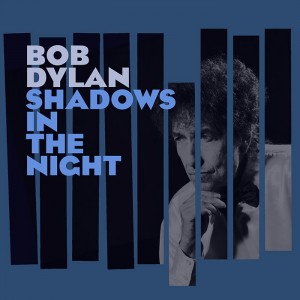 “Bob Dylan is a terrible singer!” If only I had a few bucks for every time I’ve heard that inane line…. It tempts me to either cartoon smack any fool who utters it upside their head into some sense or grumble about “morons!” and stalk away in disgust. Or try to explain (too often in vain) the mechanics of the craft and art of truly delivering a song. And, in great detail, how Dylan has been a true master singer throughout his illustrious and still, as this album shows, delightfully surprising career.
“Bob Dylan is a terrible singer!” If only I had a few bucks for every time I’ve heard that inane line…. It tempts me to either cartoon smack any fool who utters it upside their head into some sense or grumble about “morons!” and stalk away in disgust. Or try to explain (too often in vain) the mechanics of the craft and art of truly delivering a song. And, in great detail, how Dylan has been a true master singer throughout his illustrious and still, as this album shows, delightfully surprising career.
For some who don’t get it, even the conclusive proof of his distinctive takes on 10 Great American Songbook gems previously tracked by the man known now and forever as The Voice, Frank Sinatra, won’t persuade. Okay, they don’t care for the timbre of his voice (hence missing the marvelous cornucopia of its metamorphoses over the last half century… their loss not mine). Some will surely still argue the point, even if I were to bind them into an easy chair and insist that they open their ears and abandon their attitudes and mistaken preconceptions and really listen to the aptly titled Shadows in the Night until they get it and swoon, albeit with tears welling in their eyes, as one should to this deeply affecting disc.
Dylan pays loving homage to the Chairman of the Board’s singing without a trace of imitation; instead, he takes from the formidable skill set of Sinatra’s techniques – especially phrasing a micrometer behind the beat (see also Sinatra vocal disciple Willie Nelson) – and uses it to his own best effects. He also salutes the master’s 1950s Capitol concept albums – four numbers are from ’57’s Where Are You? – by creating a unified melancholic mood piece that explores the undercurrents beneath the surface of love and romance from the perspective of a man, as he is, in the late autumnal years of his life.
In doing so, Dylan finds some surprising new shades and, yes, dark shadows of mortality and loss even in the idyllic intent of “Some Enchanted Evening” (best known from Rogers & Hammerstein’s musical South Pacific) and beyond the inherent panache of “That Lucky Old Sun.” The subdued and often sombre tone of the set helps accentuate the impact of his lyrical reads and enhance how one hears the seemingly small but compelling touches as he delivers every line.
Tracked and sung live in Capitol’s echoing Studio B (where Sinatra often recorded) by Dylan with his road band, augmented by horns and pedal steel that evoke the sumptuousness of classic orchestral pop arrangements, this is a definitive singer’s album made by an artist who knows the nooks, crannies, undertones and malleability of a great song as well as anyone. As for the dedicated doubters of Dylan’s abilities as a singer, I pity that they miss out yet another masterpiece on which his seeming idiosyncrasies are simply further gifts to the keen-earned listeners from his ingenious and still robust music ingeniousness. – Rob Patterson
Bob Dylan and the Band
The Basement Tapes Complete: The Bootleg Series Vol. 11
(Legacy Recordings)
In A Word: Evergreen
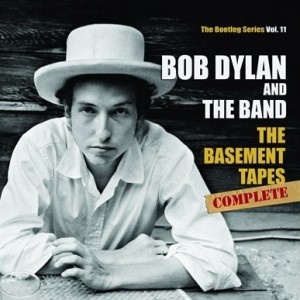 As 1967 pushed out green shoots, Bob Dylan enjoyed his new family and hid from the pop life in Woodstock, NY, happily done with brutal touring and recovering from a scary motorcycle accident. He asked Richard Manuel, Garth Hudson, Rick Danko and Robbie Robertson, who had toured the world with him, to join him in the Hudson River Valley. (Levon Helm, who’d sat out the tour, didn’t return from his native Arkansas until later that year.) They settled into a congenial basement and followed their creative whims for months, ignoring the noisy tumult then occurring in cities all over the nation.
As 1967 pushed out green shoots, Bob Dylan enjoyed his new family and hid from the pop life in Woodstock, NY, happily done with brutal touring and recovering from a scary motorcycle accident. He asked Richard Manuel, Garth Hudson, Rick Danko and Robbie Robertson, who had toured the world with him, to join him in the Hudson River Valley. (Levon Helm, who’d sat out the tour, didn’t return from his native Arkansas until later that year.) They settled into a congenial basement and followed their creative whims for months, ignoring the noisy tumult then occurring in cities all over the nation.
Forty-seven years on, Dylan releases an archival box of six discs documenting the sessions. Many fans have bought the two-disc distillation called The Basement Tapes Raw, saving about a hundred bucks. It featured most of the Dylan originals that evoke an America of rampant strangeness and mystery. It has the laugh riots of “Million Dollar Bash” and “Clothes Line Saga,” the ineffable drama of “This Wheel’s On Fire” and “Tears Of Rage,” the still-amazing “Tiny Montgomery” and “Lo and Behold,” the enduring mystery of “I’m Not There” – all rendered in perfect fidelity for the first time.
Nevertheless, beg, borrow or extort the funds to buy the full collection, which epitomizes the term “essential,” especially the first five discs. (The sixth, taken from sessions at Dylan’s house, suffers from bad sound.) Dylan pays loving homage to pop music with “I’m Your Teenage Prayer.” “Wild Wolf” calls enigmatically to darkening skies. Weird rhythms transform “If I Was A Carpenter.” He sings like a man convinced on romantic chestnuts like “Spanish Is The Loving Tongue” and “I’m A Fool For You.” The band not yet known as The Band pull lovely musical figures out of thin air. Dylan’s time in the Saugerties basement took him to places he’s rarely visited since.
– Chris Walters
The New Basement Tapes
Lost on the River
(Harvest/Island)
In A Word: Assorted
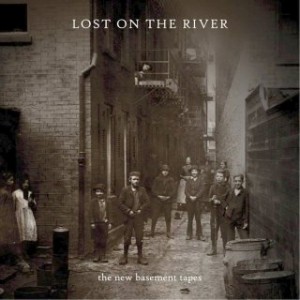 Far more Mermaid Avenue than Basement Tapes, yet in the end neither – the latter offers, however, a niftily timed marketing tie-in – this collective take on adding melodies, singing and tastily-stylish arrangements to Bob Dylan lyrics is a mixed bag peppered with some utterly delectable treats. T-Bone Burnett gathers some ‘A’ students from the current creative class to do so, yet the results range from yeah, that’s okay, interesting, likable, but… to, on occasion, stunning, heart-rending and truly captivating magnificence. And a few duds.
Far more Mermaid Avenue than Basement Tapes, yet in the end neither – the latter offers, however, a niftily timed marketing tie-in – this collective take on adding melodies, singing and tastily-stylish arrangements to Bob Dylan lyrics is a mixed bag peppered with some utterly delectable treats. T-Bone Burnett gathers some ‘A’ students from the current creative class to do so, yet the results range from yeah, that’s okay, interesting, likable, but… to, on occasion, stunning, heart-rending and truly captivating magnificence. And a few duds.
All involved do make the grade at least once: Among Best of Show here is one of three tracks by Elvis Costello, arguably the sharpest post-Dylan lyricist ever during his brilliant early years. “Married To My Hack” evokes his potency back when his music had sparks that made it really matter; its raw rock modernism outdoes most anything he’s waxed over the last two decades or so.
My Morning Jacket’s Jim James – sans too much of the irksome echo he’s so fond of, thank God – stitches boozy swing with a one-eyed cat creep though the seafood store to make “Nothing To It” utterly alluring. Marcus Mumford sings like a man on fire – from crackling flames to glowing embers – as he channels eternal charms into “Kansas City,” a dynamic rouser that I doubt I’ll ever tire of hearing (making it an effective ameliorative to how overplay wiped the bloom off the initial introductory rose of his band’s “Little Lion Man”). Tommy Goldsmith of Dawes fashions folk-rock delight on “Card Shark,” and sails across glistening seas powered by a warm breeze on “Florida Key.”
Valedictorian here is former Carolina Chocolate Drop Rhiannon Giddens, whose “Spanish Mary” haunts like a lost soulmate in the fog just beyond reach. Her “Duncan and Mary” is a nuclear-powered Appalachian reel. And she closes the album by pairing sparse delicacy with a stirring vocal tour de force on “Lost on the River #20.” Her canny background singing on other tracks also earns her MVP honors, and to wit, her track on the expanded deluxe release, “Hidee Hidee Ho #16,” alone makes it worth shelling out a bit more for it.
It’s hard to go too far wrong when you start with Dylan’s words. The raw yet elegant “Stranger” is a winner even if it takes Marcus a bit too far back to Strumford & Sons; his deluxe edition track, the simmering, meditative dirge “The Whistle Is Blowing,” might have better served the basic release. Opener “Down on the Bottom” (James) is a bit of a yawn but “Hidee Hidee Ho #11” (with just enough echo) subtly enchants. Even a sweetly sensitive vocal reading by Costello on “Lost on the River” fails to enrich its flatness. Goldsmith’s “Liberty Street” begs for something more and more special while Costello’s more snarling take on basically the same words, “Six Months in Kansas City (Liberty Street)” stumbles halfway through into messy morass of too much more.
Other deluxe version tracks like Costello’s unadorned “Golden Tom – Silver Judas” and Goldsmith’s pleasant “Diamond Ring” don’t really augur well for a second batch from the 50-plus tracks this gang recorded, while James’ “Quick Like A Flash” strikes fear about what didn’t make the first cut and them some, sounding like a barroom jam band at the end of a far-too-long night (with, yep, far too much echo).
And what’s puzzlingly missing and might have made this all stronger is the man behind it all: Burnett, a Dylan Rolling Thunder sideman whose minor but brilliant artistic career before becoming an ubiquitous producer du jour bristled with Dylanesque wit, wordplay, piss and vinegar. One can only imagine the treasure or two that could have resulted if he’d stepped out from behind the recording console into the cutting room to add his own artistry to the selections.
The high-art studio production here seems too often to work against its reaching the eternal appeal of the loosey-goosey magic of making music for its own sake of the real Basement Tapes and the rollicking charms of Mermaid Avenue both one and two. Hence this not-fully-successful experiment is one of those albums one listens to and then files away after culling a few cuts for compilation mixes and shuffle play rather than a timeless gem to savor in full again and again over the years to come.
– Rob Patterson
- Eagles, Linda Ronstadt ’72 Concert Review: ‘Well Worth Catching’ - 12/02/2025
- Born to Run: An Appreciation - 08/24/2025
- When the Climax Blues Band Got it Right - 05/21/2025


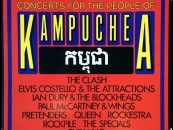
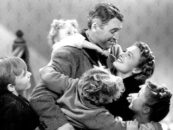
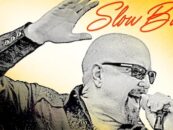
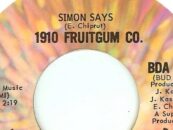

No Comments so far
Jump into a conversationNo Comments Yet!
You can be the one to start a conversation.